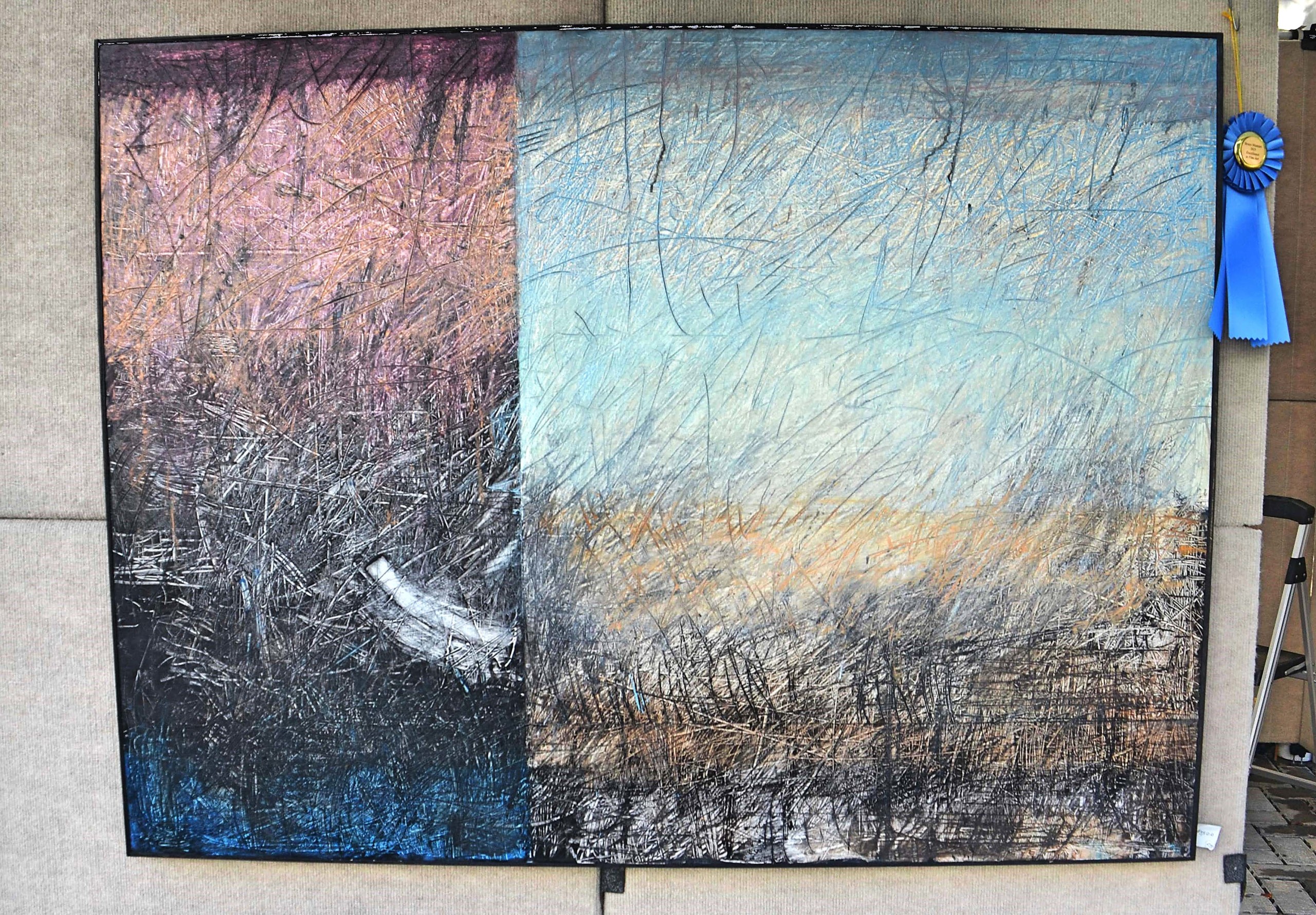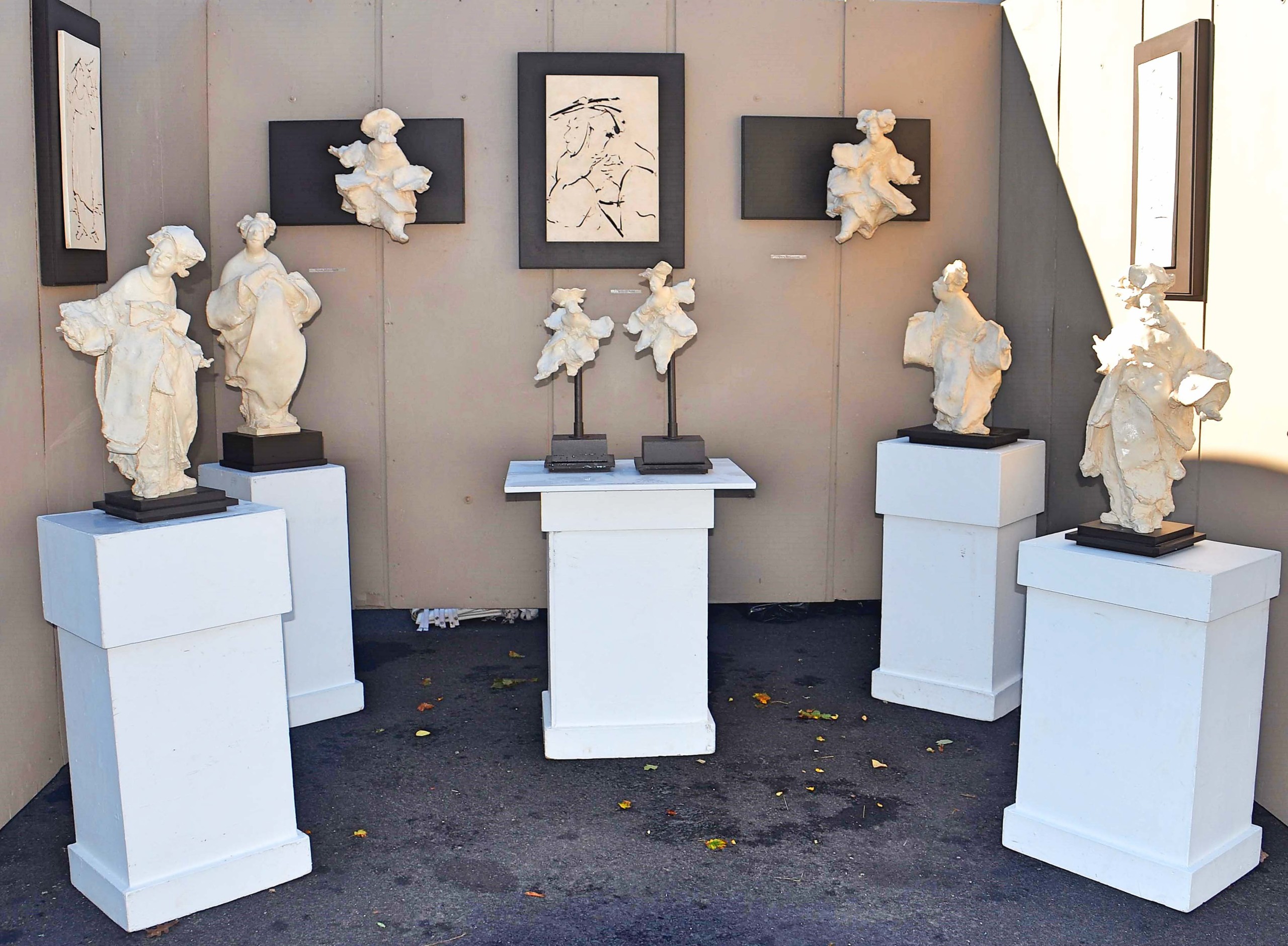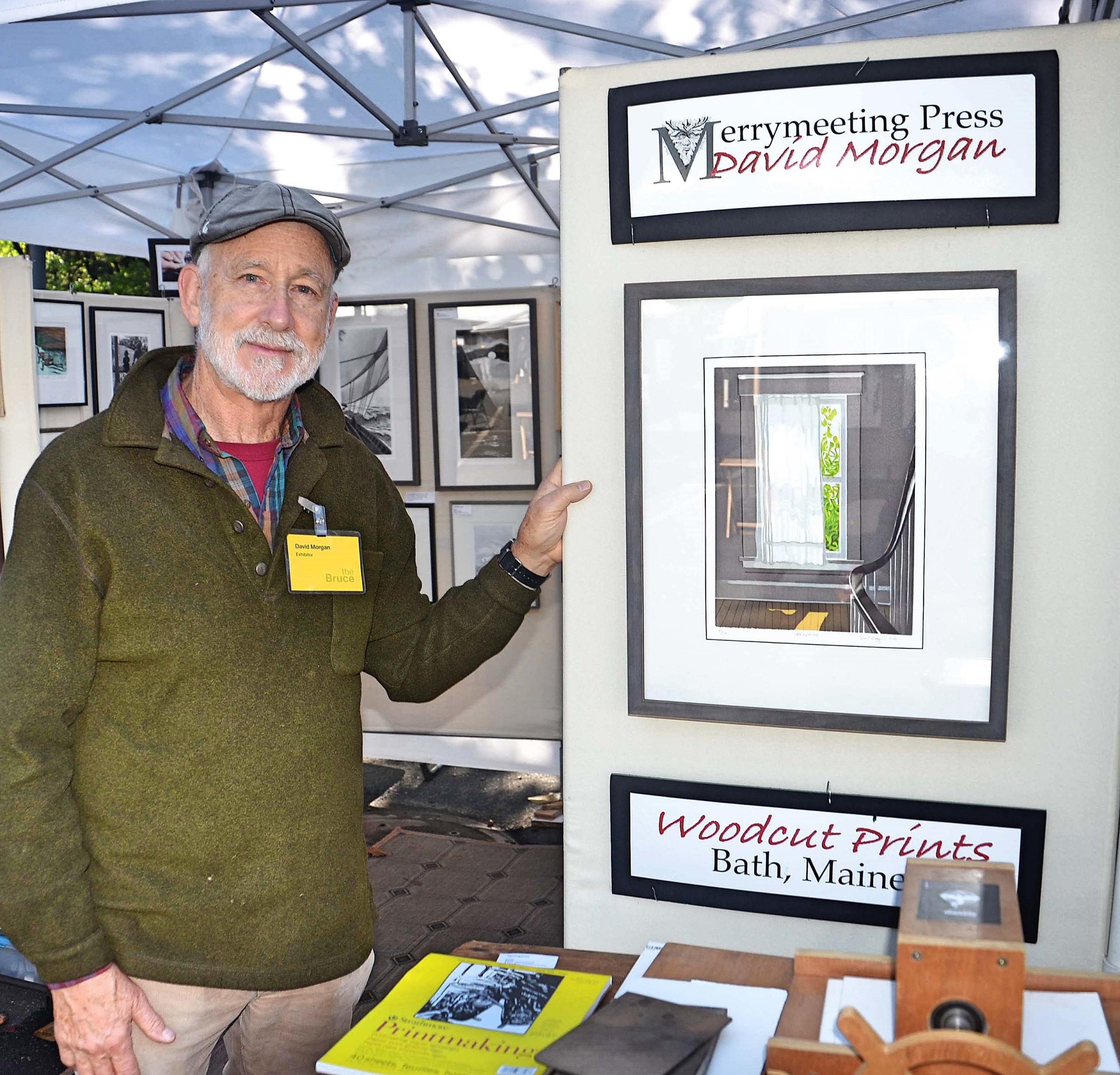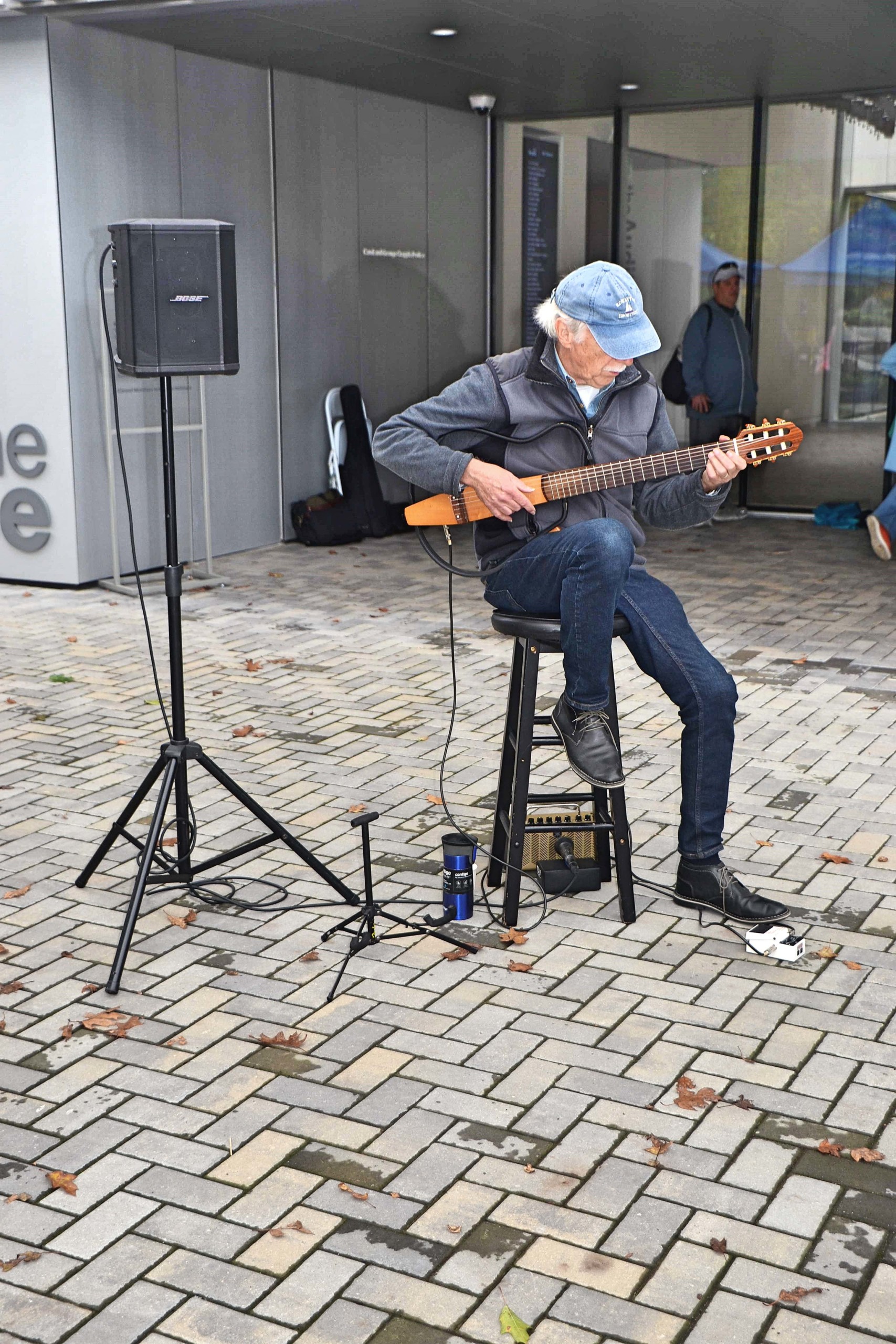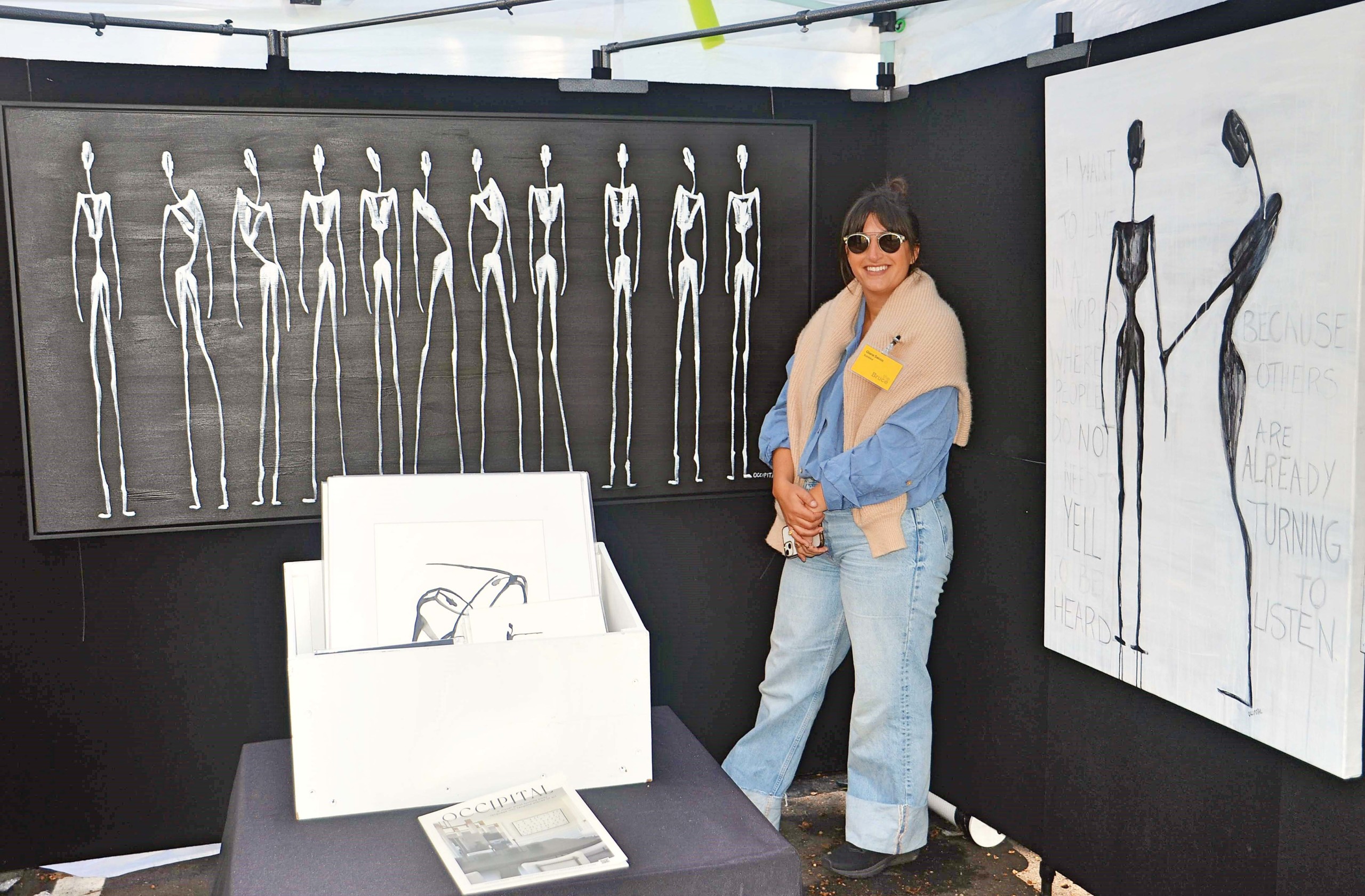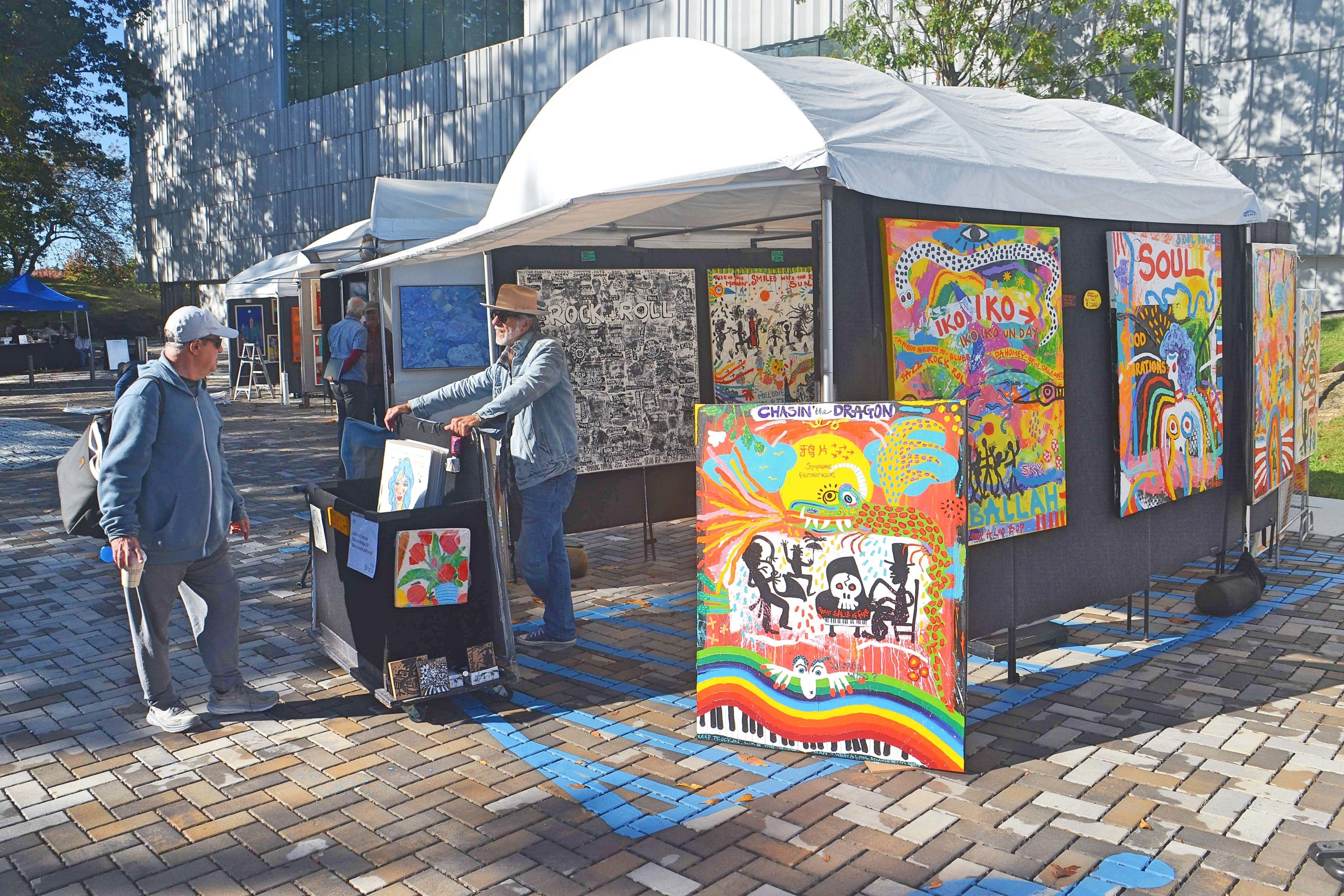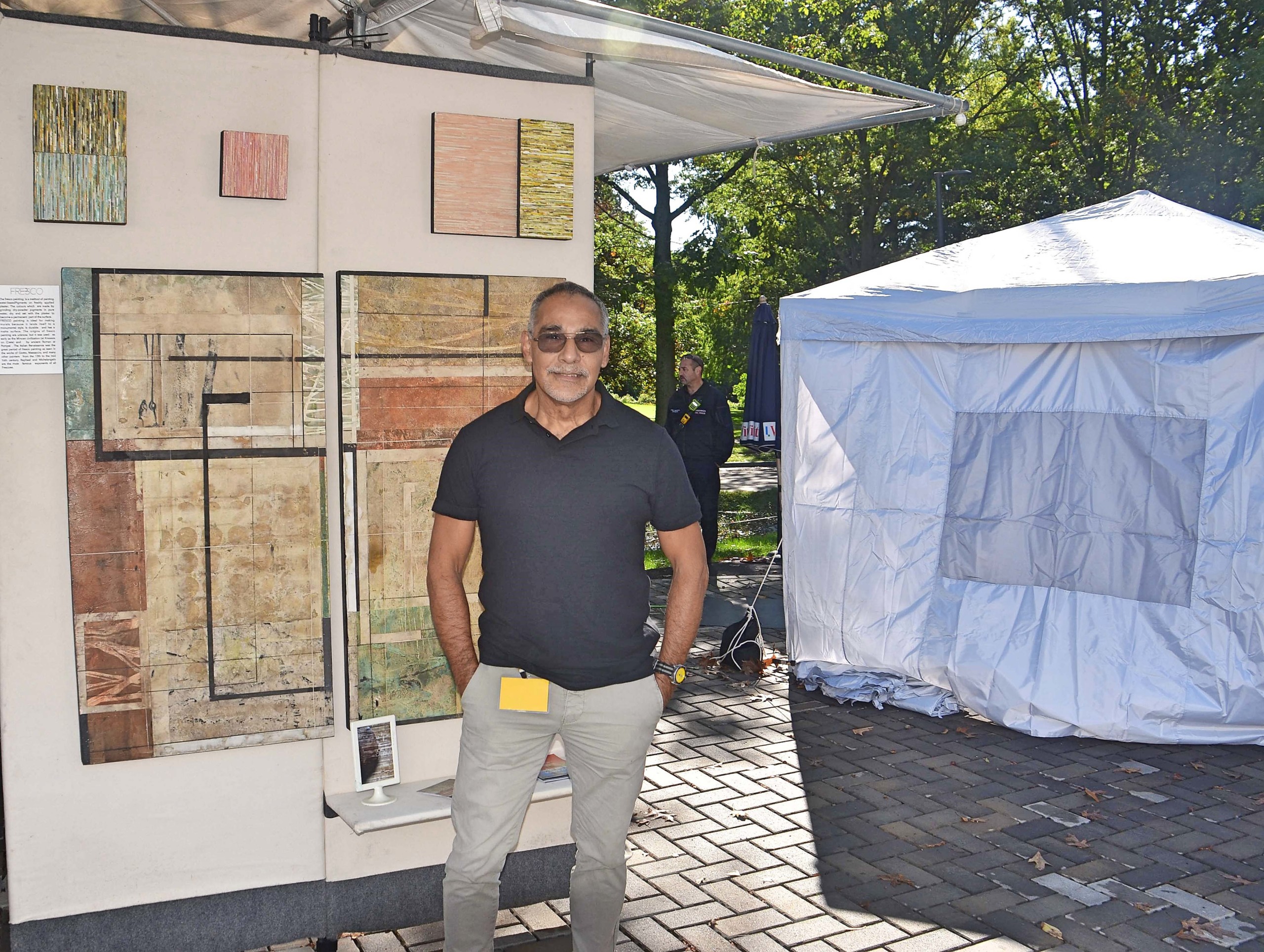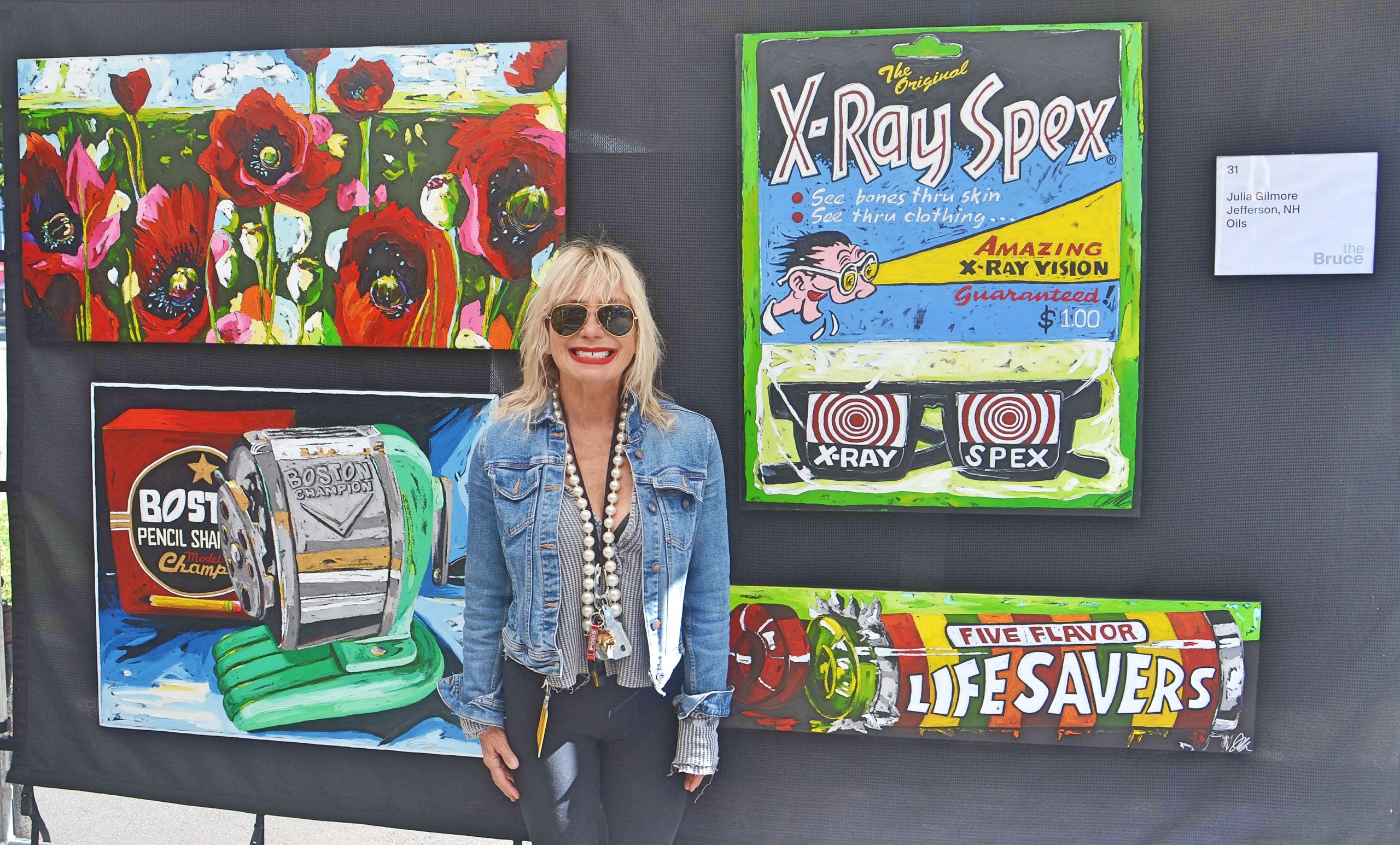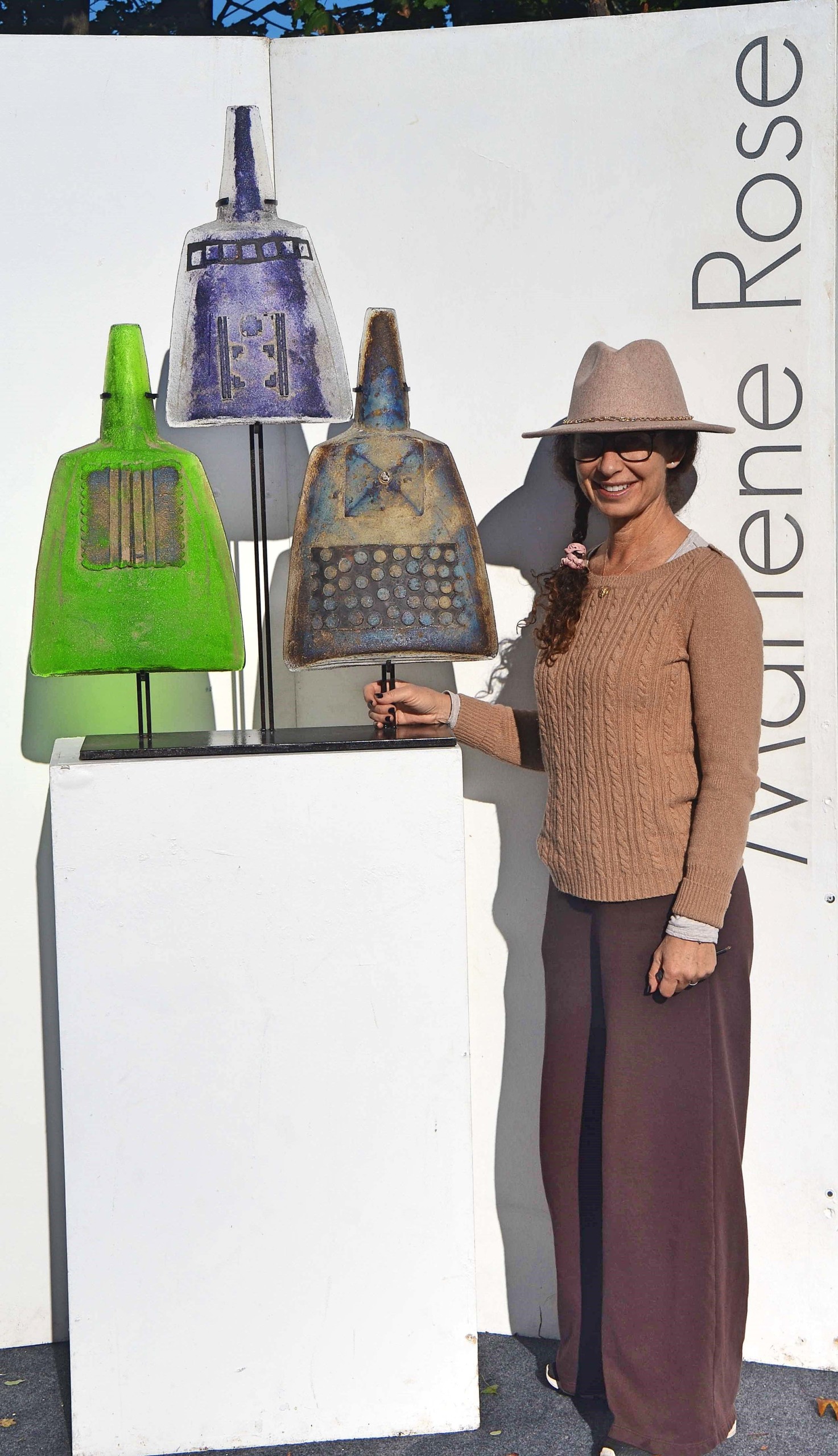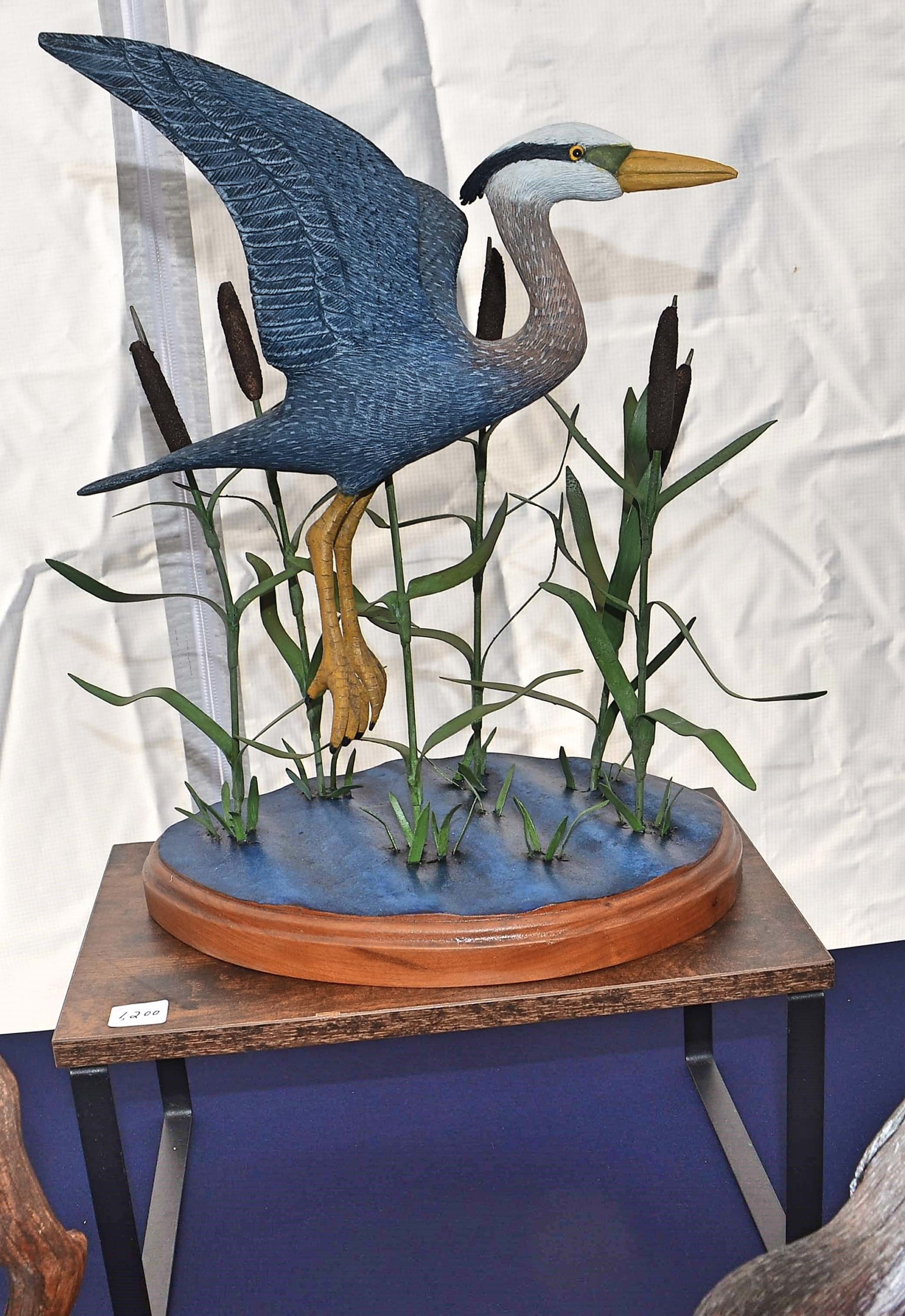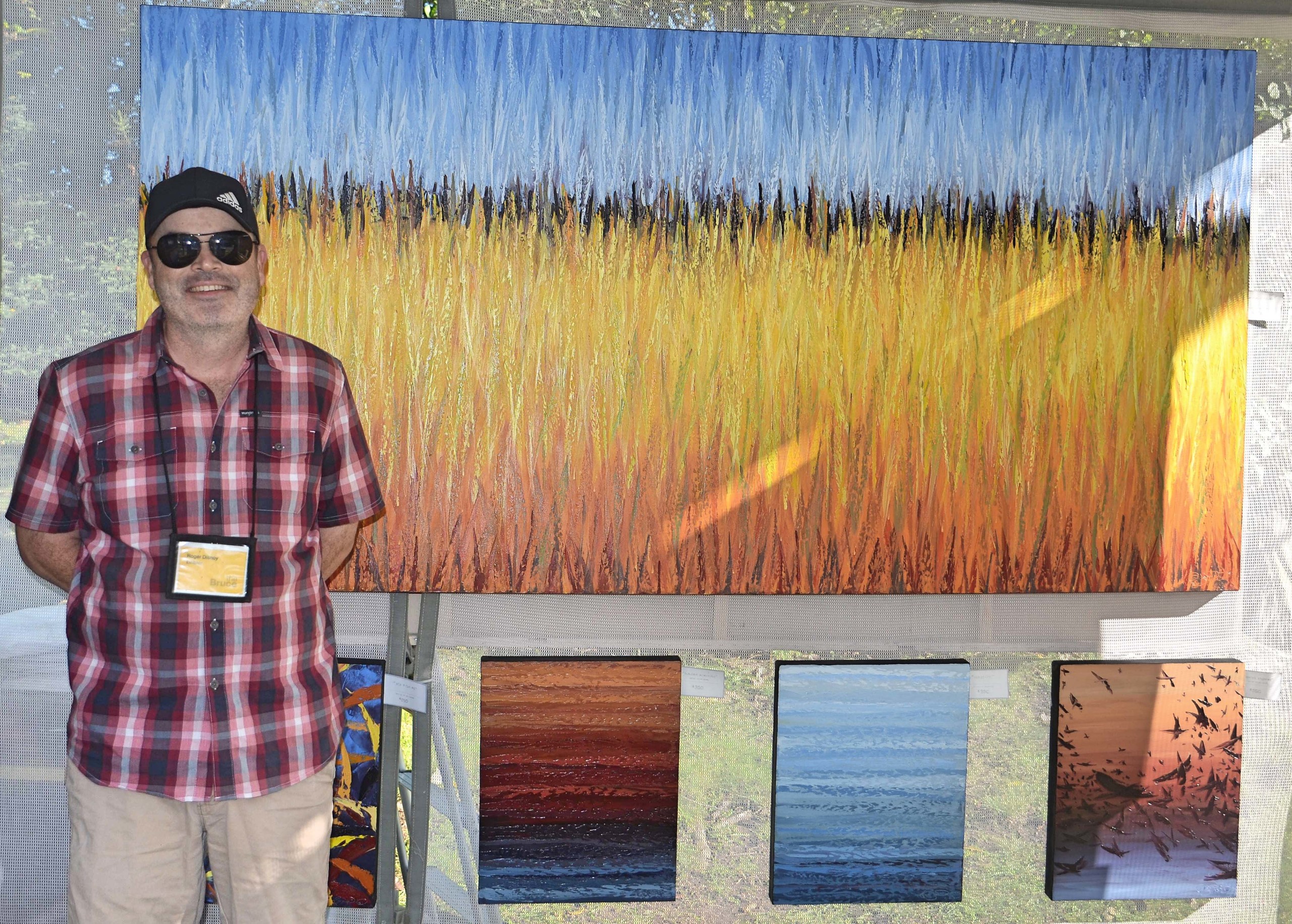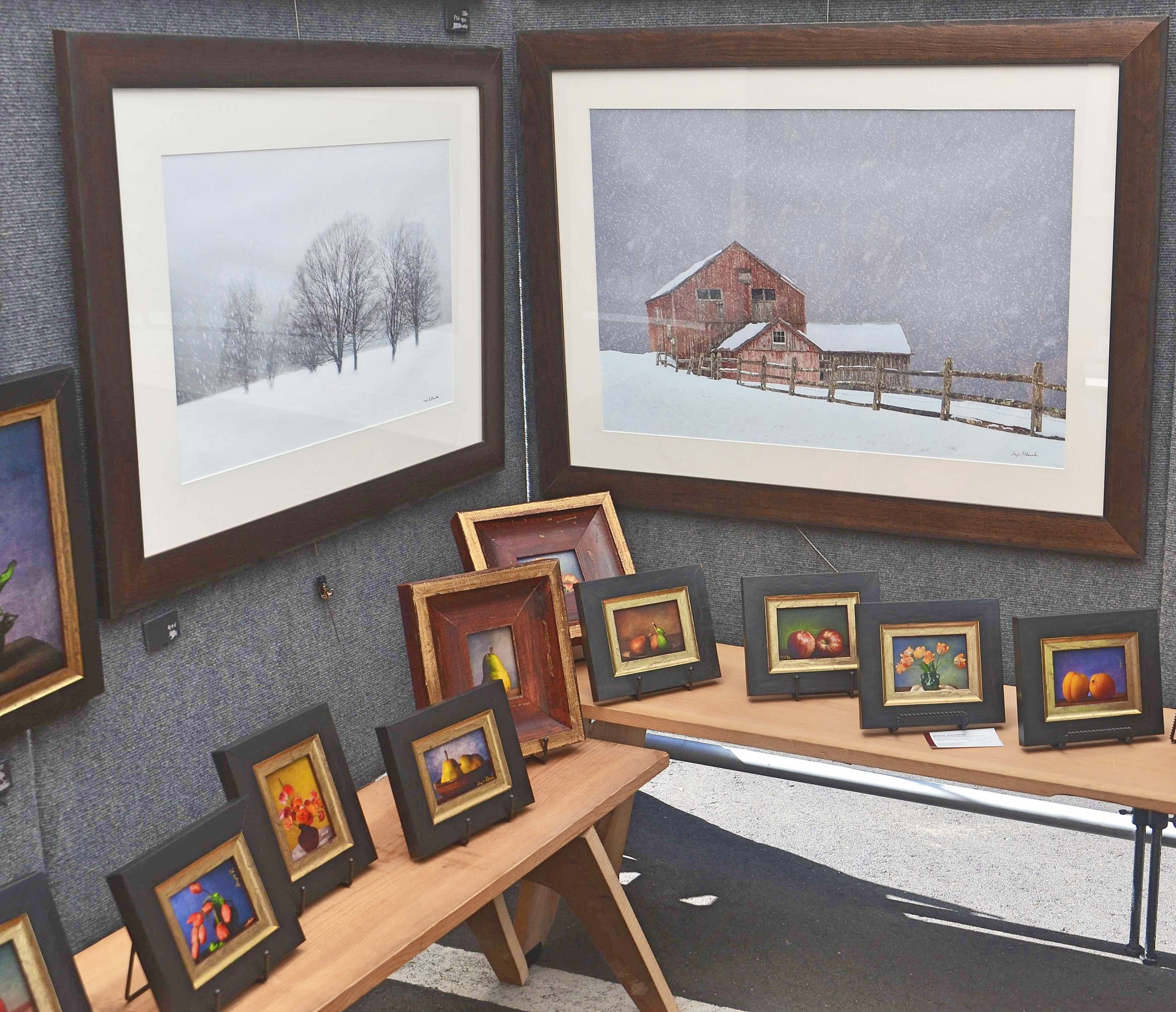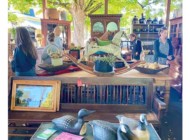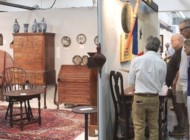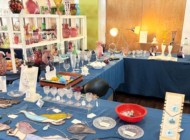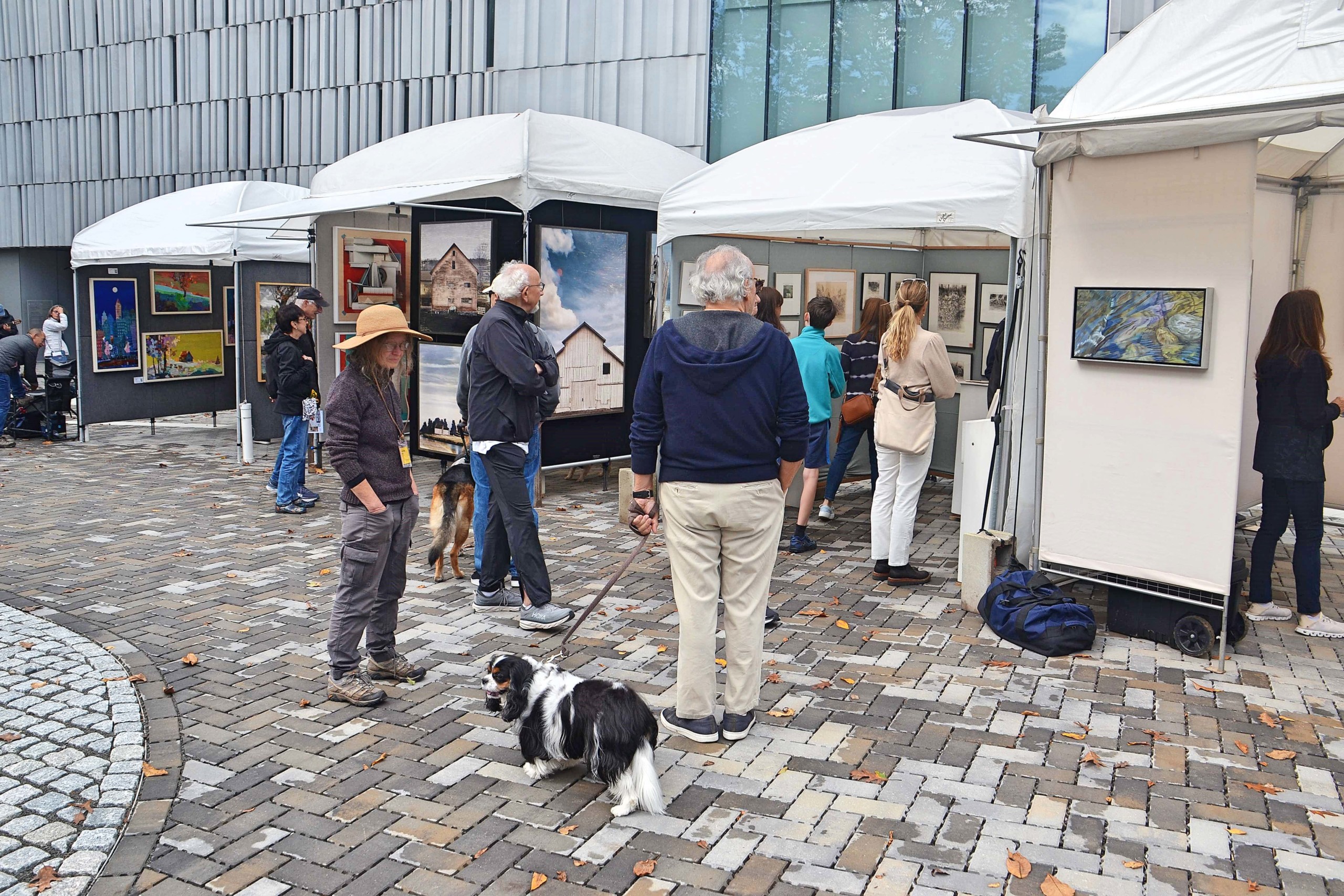
Sunday shoppers were able to enjoy a fine early fall day and an overwhelming diversity of contemporary art by more than 70 exhibitors outside the museum.
Review & Photos by W.A. Demers
GREENWICH, CONN. — Contemporary art was again showcased on October 7-8, with white tents lining the Bruce Museum’s drive and parking area, as the newly expanded museum hosted the 42nd Outdoor Arts Festival, a juried show running each day from 10 am to 4 pm. Managed by Sue Brown Gordon, the event’s first day was somewhat of a washout as rains pummeled throughout the day. Sunday, however, dawned gloriously sunny and exhibiting artists made up for lost time presenting a dizzying variety of original art works by more than 70 juried fine artists.
Not only were Sunday’s shoppers enjoying great weather and compelling art, more importantly they had a chance to talk with the featured artists, present throughout the entire weekend and offering their works for sale.
“We are honored to be the hosts of such a prestigious group show at the Bruce,” said Gordon. “While we do present 11 top awards at this museum event, the cast of those in attendance is all quite noteworthy. We thank our judges Miggs Burroughs and Michael Brennecke for making the challenging decisions among the tough competitors showing. Artists join us from nearby Greenwich and from as far away as California and Florida. When they commit to show, they bring their A-game and the result is a museum-quality event.”
Andrew Sovjani of Conway, Mass., comes from a family of working studio artists, so art making is in his DNA.
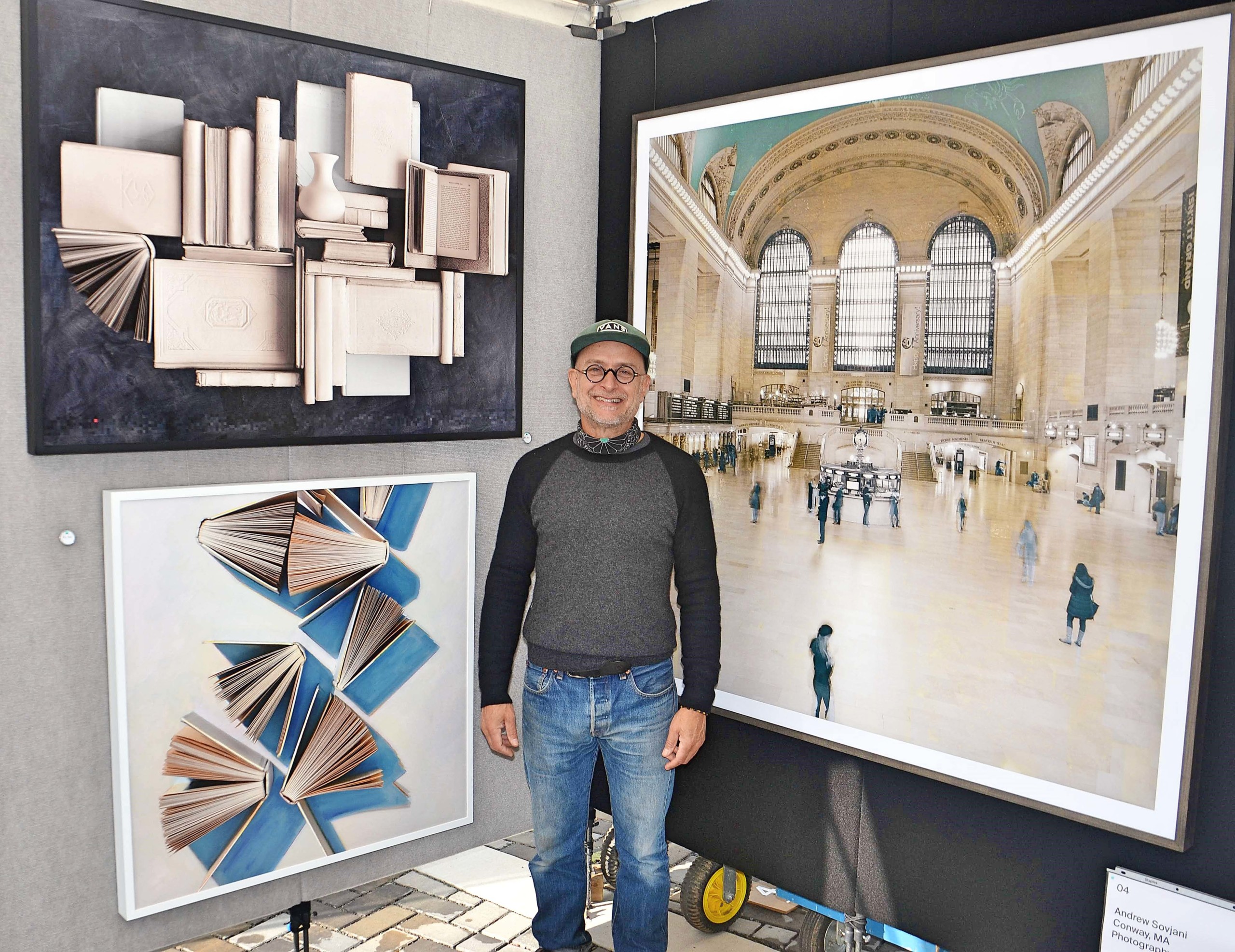
With unique prints that blur the line between photography and painting, Andrew Sovjani of Conway, Mass., has drawn from his life experiences in the scientific world and living in Asia to create transcendent bodies of work that are often extremely peaceful, such as the long-exposure film-based evocation of New York City’s Grand Central Station in which the stationary people are primarily those who were looking at their smartphones while the exposure was taken. His other body of work, shown at left, is a series that pays respect to the experience of the physical book.
His award-winning photographs have been shown in exhibitions throughout the United States, Europe and Japan and are held in many public and private collections.
His unique prints blur the line between photography and painting, and he has drawn from his life experiences in the scientific world and living in Asia to create transcendent bodies of work that are often extremely peaceful, such as the long-exposure film-based evocation of New York City’s Grand Central Station in which the stationary people are primarily those who were looking at their smartphones while the exposure was taken. His other body of work is a series that pays respect to the experience of the physical book. He says that the digital world is in ascendance, while physical books, evoking memories of touch, smell and other physical senses are disappearing.
David Bryce was standing at his booth at the top of the drive leading to the museum’s entrance. He lives in Great Barrington, Mass., and his medium is clay, informed by prior experience working in a bronze foundry as well as working on architectural restoration projects in New York City’s Central Park. For this show he was set up with a showcase of his sculptures that over the past 20 years he has been offering at juried fine art festivals and craft shows. He has completed commissioned pieces for both residential and commercial settings in the United States and internationally, as well as for purchase by town governments. In his own words, Bryce says, “My pieces unite baroque movement, abstract expressionist gesture and Asian decorative spirit with a commitment to my own gentle whimsical voice.”
There was a double booth display featuring two artistic mediums practiced by Hudson Valley, N.Y., artist Eric Heitmann. One is a series of nature themes rendered with acrylic paint on canvas in an abstract impressionist style. The third-generation artist says that when he paints these he is both methodical and carefree, splashing and flinging paint while perfectly placing a flower, stem or star. With brushes, bottles, rags and fingers, he creates fields of flowers, nighttime gardens and layered seascapes.
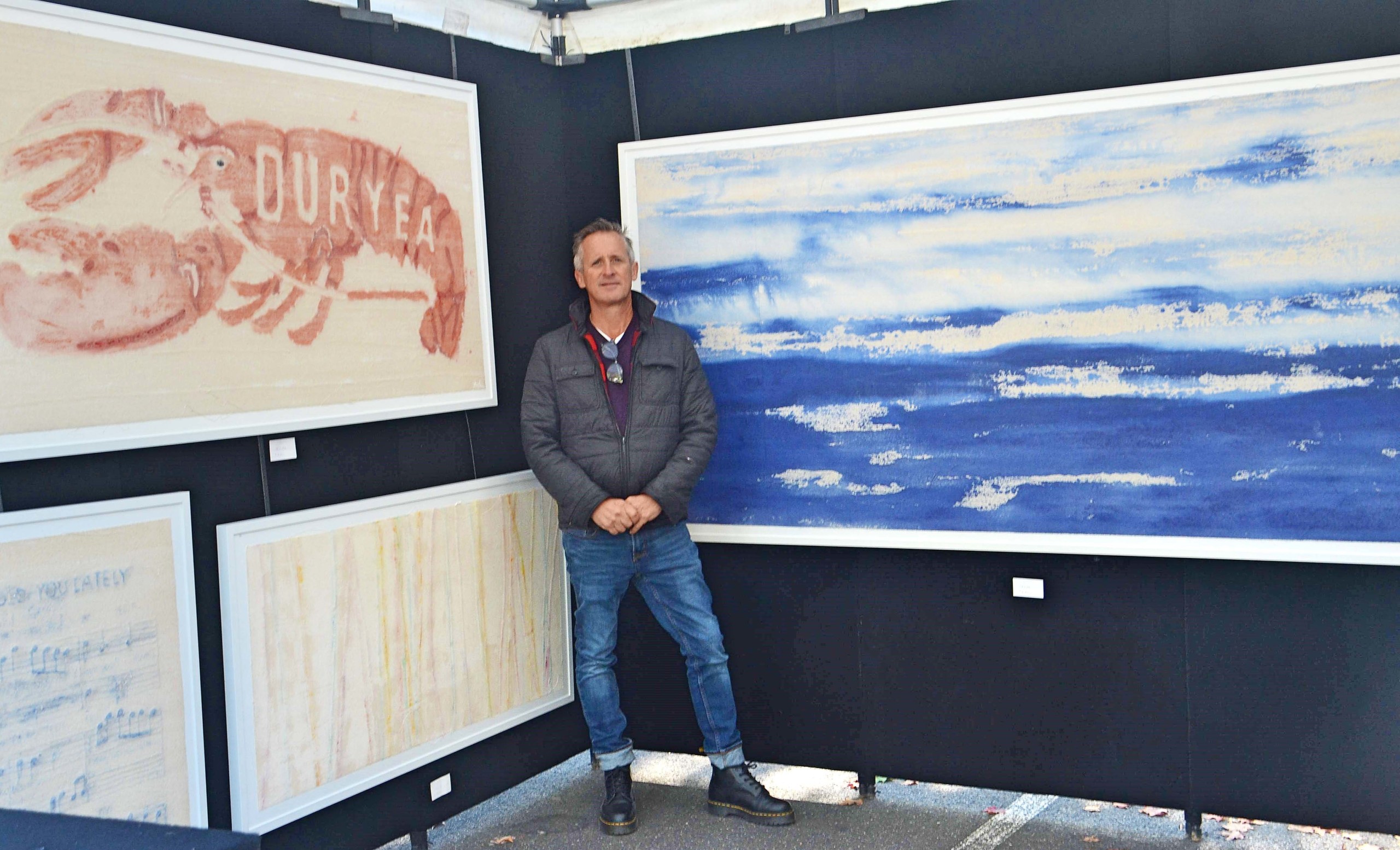
Third-generation artist Eric Heitmann, Hudson Valley, N.Y., showcased one of his idioms, natural earth watercolors made with sailcloth and seawater. “My paintings have always been about nature,” he says. “Once I started using pigments from the earth, nature became part of my paintings.”
His other idiom showcased in a separate booth were large, organic watercolor paintings with a unique twist. He uses raw sailcloth as his canvas with all its minor imperfections, and he rips the edges rather than cutting them. More important, these might be more properly be call seawatercolors as he uses seawater along with pigments from the earth. “My paintings have always been about nature,” he says. “Once I started using pigments from the earth, nature became part of my paintings.”
When you see the art by John van Orsouw, you are at once reminded of the lively inanity of a Howard Finster painting or perhaps a CoBrA work That makes sense because Van Orsouw is formerly from the Netherlands where the European avant-garde art group formed in the late 1940s. He now makes his home among the Amish in Palatine Bridge, a small village in New York State. A lifelong doodler, the self-taught artist says he is influenced by children’s toys, folk and Indigenous art forms. His paintings are part child, part expressionistic brut, part music and part CoBrA, rendered on anything available, including old wood, cardboard and all kinds of “wonderful junk,” he says. He has exhibited at the Outsider Art Fair in New York City and Paris.
Those looking for sheer fun to hang on their walls should check out Van Orsouw, but also Julia Gilmore, who resides in Jefferson, N.H., but is often on the road searching for the touchstones of her generation’s deep-seated memories to portray with rich colors and textures using a palette knife. Remember that roll of five-flavor Lifesavers your mother used to keep in her purse, doling out the jewel-colored candy? Or the red Bell Labs rotary phone that rested on a nightstand with the promise of meaningful connections? These themes make up Gilmore’s bold, minimal, representational oil paintings rendered in oil with a palette knife revealing her affection for rich colors and textures. In her artist’s statement she writes, “What do they tell writers? ‘Write what you know.’ I paint what I know. What I know and what I see is a world filled with an intense beauty even in mundane, everyday objects.”
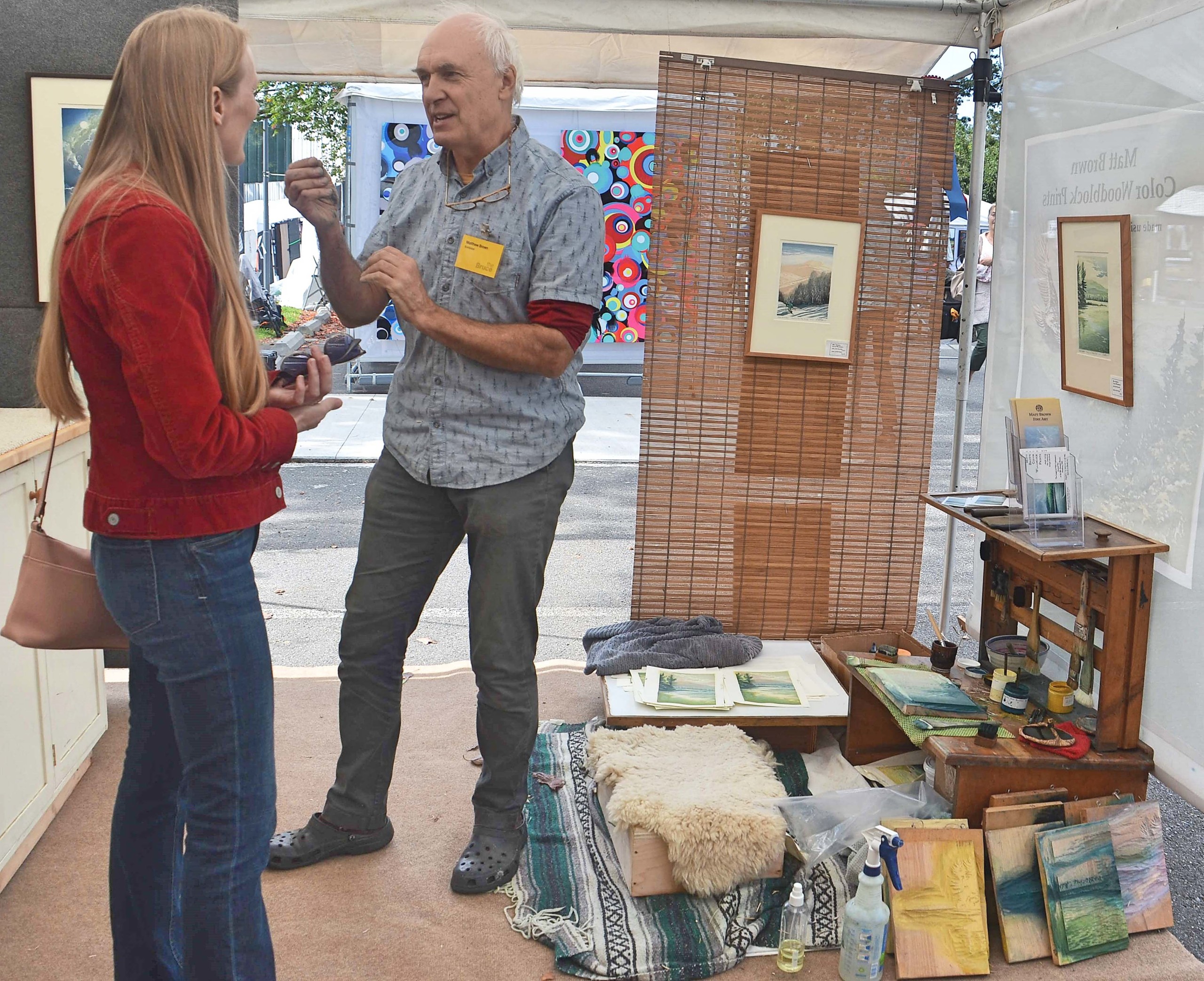
Woodcut print artist Matthew Brown, here describing his process to a shopper, won the festival’s Best In Show award and it was clear to see why. The Lyme, N.H., artist makes color woodblock prints using the Japanese hanga method, done entirely by hand, using a hand-held baren instead of a press. The subject matter, the layers of color, the precise registration all combine to his imagery, mostly of New England with a focus on the lakes and mountains of Vermont and New Hampshire, highly sought after.
Winning Best in Show in the juried event was color woodcut print artist Matthew Brown. The Lyme, N.H., artist makes color woodblock prints using the Japanese hanga method, done entirely by hand, using a hand-held baren instead of a press. It differs, he says, from the method that uses oil on a printing press, because you’re printing water. It’s a process the Japanese have used for more than 1,000 years, making its heyday with ukiyo-e prints in the late Eighteenth Century. Brown’s subject matter, the layers of color, the precise registration all combine to his imagery, mostly of New England with a focus on the lakes and mountains of Vermont and New Hampshire, highly sought-after.
For additional information, www.gordonfinearts.org or 518-852-6478.

